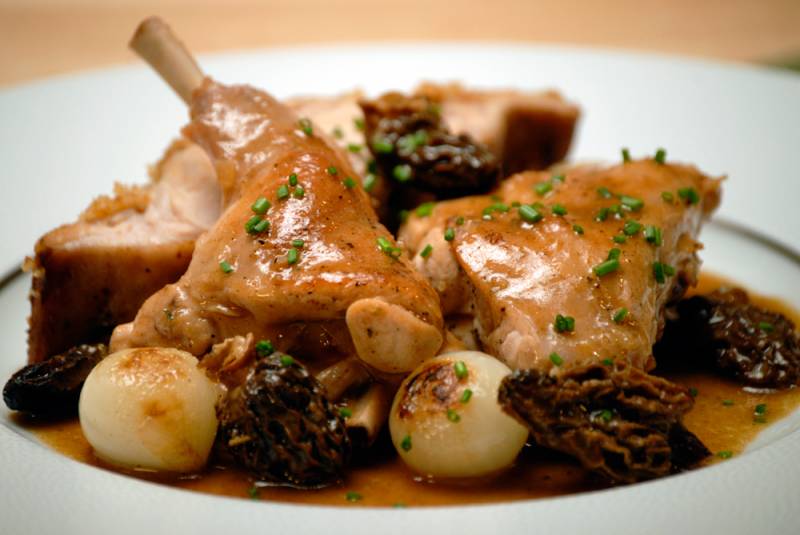From the Essential Pépin tv series, Episode 119: Game Day
This stew is made with the rabbit’s front and back legs and rib cage. The saddle (the whole back) is roasted, cooking in less time than the stew and staying moist and flavorful. It can be served with the stew or on its own. I use dried morels in the stew (the equivalent of 1 pound of fresh). The dried have more taste than the fresh, and the water obtained from reconstituting them is added to the sauce, giving it more intense flavor. —Jacques Pépin
Serves 4
1 cup (about 1 1/2 ounces) dried morels
2 cups hot water
1 rabbit (about 3 pounds), cleaned and skinned
1 teaspoon herbes de Provence
3/4 teaspoon salt
1/4 teaspoon freshly ground black pepper
1 tablespoon unsalted butter
1 tablespoon plus 2 teaspoons olive oil
16 pearl onions (about 12 ounces)
2 tablespoons chopped shallots
1 tablespoon all-purpose flour
1/3 cup fruity dry white wine (such as Riesling or Albariño)
2 teaspoons chopped garlic (about 3 cloves)
1 tablespoon Dijon mustard
1 slice firm white bread (3/4 ounce)
2 teaspoons diced (1/2-inch) peeled fresh horseradish or 1 tablespoon bottled horseradish
Rinse the morels for a few seconds under running water, then put them in a bowl and pour the hot water over them. Place a small saucepan on top of the morels to push them down into the water, and let soak for 30 minutes.
